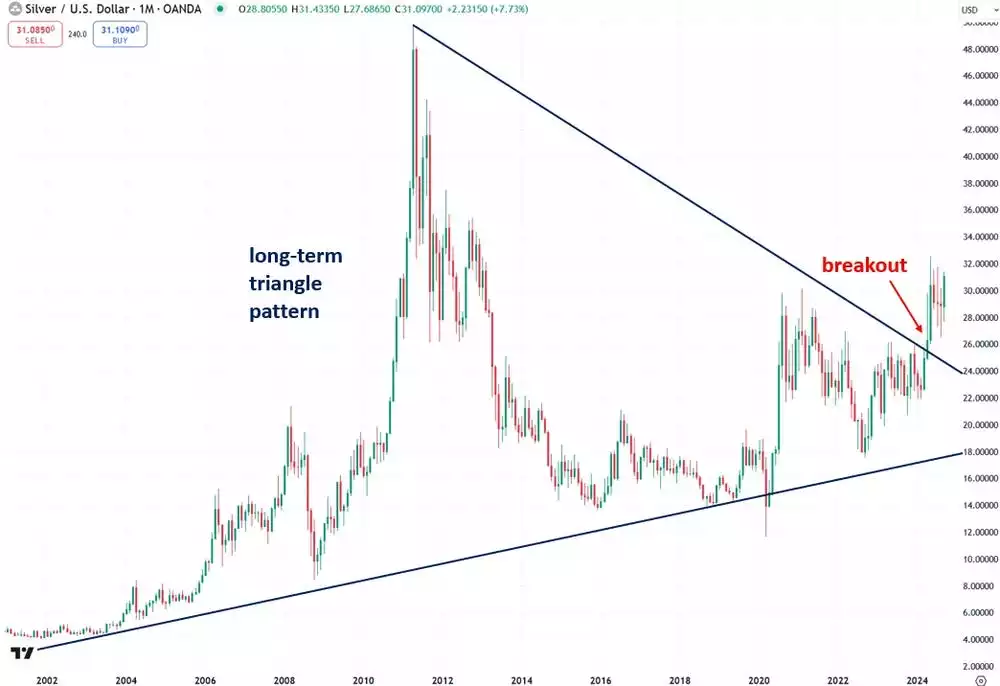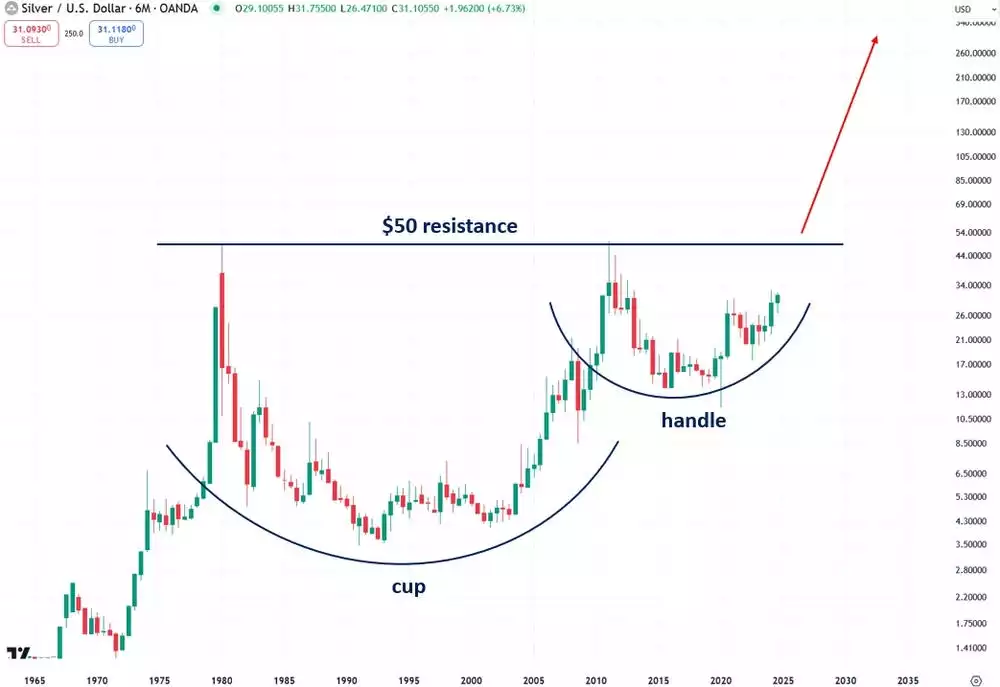According to a report from Russian news agency Interfax last week, Russia plans to significantly increase its holdings of gold, silver, platinum, palladium and gemstones. The report states that the nation plans to allocate 51.5 billion Rubles (AU$796.89m) in each of 2025, 2026 and 2027.
While the report doesn’t state how much of the allocated Rubles will go to acquiring silver, this is a particularly significant event because silver is not currently used as a reserve asset across the world. According to Ainslie Bullion, central banks have been purchasing gold at record levels in recent years which has helped to push the price to record highs.
Silver, however, has not experienced the same price appreciation, but this development may be the trigger to see it push past US$50/oz and well beyond. The white metal is already forecasted to be in a supply deficit over the coming years (due largely to continued increases in industrial demand, especially in the green energy sector), and those numbers certainly don’t factor in a nation-state adding it to their reserves.
In the case of retail and SMSF investors, silver is considered more affordable than gold, given the gold-to-silver ratio stands at 83.57. This kind of thought may well prevail among central banks, and this Russia step might be the way for others, including BRICS nations, to emulate.
Not only is it perceived by many to be undervalued, but buying silver is another way for central banks to diversify their assets in a move away from having reserves dominated by U.S. dollars. This trend has been playing out for some time now, with central banks growing increasingly concerned with rising levels of debt, currency debasement, and geopolitical risk in Europe and the Middle East.
The following charts, shows a bullish break from the long-term triangle pattern that may signal the start of the next silver bull run, and a very bullish Cup and Handle pattern that’s formed on the logarithmic chart dating way back to the 1960s. Want to know more? Read on here.


